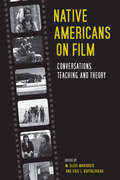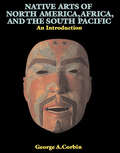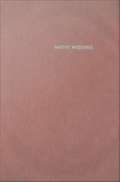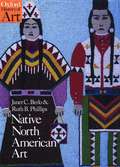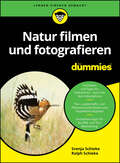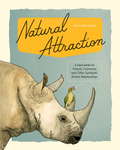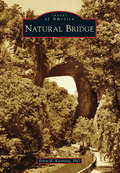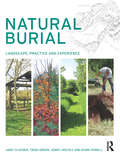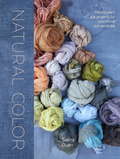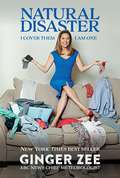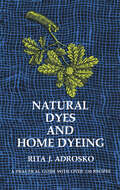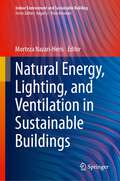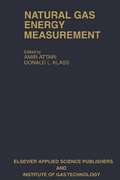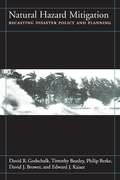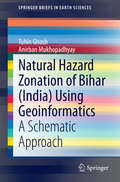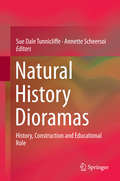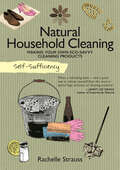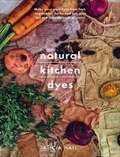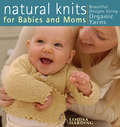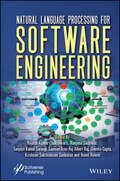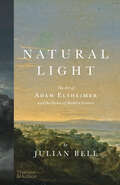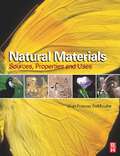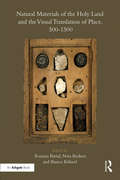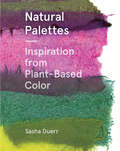- Table View
- List View
Native Americans on Film: Conversations, Teaching, and Theory
by M. Elise Marubbio and Eric L. Buffalohead“An essential book for courses on Native film, indigenous media, not to mention more general courses . . . A very impressive and useful collection.” —Randolph Lewis, author of Navajo Talking PictureThe film industry and mainstream popular culture are notorious for promoting stereotypical images of Native Americans: the noble and ignoble savage, the pronoun-challenged sidekick, the ruthless warrior, the female drudge, the princess, the sexualized maiden, the drunk, and others. Over the years, Indigenous filmmakers have both challenged these representations and moved past them, offering their own distinct forms of cinematic expression.Native Americans on Film draws inspiration from the Indigenous film movement, bringing filmmakers into an intertextual conversation with academics from a variety of disciplines. The resulting dialogue opens a myriad of possibilities for engaging students with ongoing debates: What is Indigenous film? Who is an Indigenous filmmaker? What are Native filmmakers saying about Indigenous film and their own work? This thought-provoking text offers theoretical approaches to understanding Native cinema, includes pedagogical strategies for teaching particular films, and validates the different voices, approaches, and worldviews that emerge across the movement.“Accomplished scholars in the emerging field of Native film studies, Marubbio and Buffalohead . . . focus clearly on the needs of this field. They do scholars and students of Native film a great service by reprinting four seminal and provocative essays.” —James Ruppert, author of Meditation in Contemporary Native American Literature“Succeed[s] in depicting the complexities in study, teaching, and creating Native film . . . Regardless of an individual’s level of knowledge and expertise in Native film, Native Americans on Film is a valuable read for anyone interested in this topic.” —Studies in American Indian Literatures
Native Arts Of North America, Africa, And The South Pacific: An Introduction
by George A. CorbinThis introduction to the art of tribal peoples of North America, Africa, and the South Pacific does not briefly cover the hundreds of artistic traditions in these three vast areas but rather studies in depth thirty-six art styles within all three areas using the methods of art history, including stylistic analysis and iconographic interpretation. Emphasis is on the art in cultural context and as a system of visual communication within each tribal area. Where appropriate for a more complete understanding of the art, data from archaeology, ethnology, linguistics, religion, and other humanistic disciplines are included.Among the peoples and cultures whose art is studied are the Haida, Kwakiutl, and Tlingit; the Hohokam and Mongollon, the Anasazi and Hopi; the Dogon and Bamana of Mali; the Asante of Ghana; the Benin, Yoruba, and Ibo of Nigeria; the Fan, the Bamum, and the Kuba of Central Africa; Australian aboriginal and Island New Guinea art; Island Melanesia art; central and eastern Polynesia; Hawaii and the Maori in Marginal Polynesia.The format of the text and selected illustrations is based on seventeen years of teaching African, North American Indian, and South Pacific art to undergraduate and graduate students at Herbert H. Lehman College (CUNY), New York University, and Columbia University. The book is intended for art history and anthropology students and the interested lay reader or collector. The detailed notes at the end of the book are for further study, research, and understanding of the tribal art style under discussion.
Native Arts Of North America, Africa, And The South Pacific: An Introduction
by George A. CorbinThis introduction to the art of tribal peoples of North America, Africa, and the South Pacific does not briefly cover the hundreds of artistic traditions in these three vast areas but rather studies in depth thirty-six art styles within all three areas using the methods of art history, including stylistic analysis and iconographic interpretation. Emphasis is on the art in cultural context and as a system of visual communication within each tribal area. Where appropriate for a more complete understanding of the art, data from archaeology, ethnology, linguistics, religion, and other humanistic disciplines are included.Among the peoples and cultures whose art is studied are the Haida, Kwakiutl, and Tlingit; the Hohokam and Mongollon, the Anasazi and Hopi; the Dogon and Bamana of Mali; the Asante of Ghana; the Benin, Yoruba, and Ibo of Nigeria; the Fan, the Bamum, and the Kuba of Central Africa; Australian aboriginal and Island New Guinea art; Island Melanesia art; central and eastern Polynesia; Hawaii and the Maori in Marginal Polynesia.The format of the text and selected illustrations is based on seventeen years of teaching African, North American Indian, and South Pacific art to undergraduate and graduate students at Herbert H. Lehman College (CUNY), New York University, and Columbia University. The book is intended for art history and anthropology students and the interested lay reader or collector. The detailed notes at the end of the book are for further study, research, and understanding of the tribal art style under discussion.
Native Moderns: American Indian Painting, 1940-1960
by Bill AnthesBetween 1940 and 1960, many Native American artists made bold departures from what was considered the traditional style of Indian painting. They drew on European and other non-Native American aesthetic innovations to create hybrid works that complicated notions of identity, authenticity, and tradition. This richly illustrated volume focuses on the work of these pioneering Native artists, including Pueblo painters Jos Lente and Jimmy Byrnes, Ojibwe painters Patrick DesJarlait and George Morrison, Cheyenne painter Dick West, and Dakota painter Oscar Howe. Bill Anthes argues for recognizing the transformative work of these Native American artists as distinctly modern, and he explains how bringing Native American modernism to the foreground rewrites the broader canon of American modernism. In the mid-twentieth century, Native artists began to produce work that reflected the accelerating integration of Indian communities into the national mainstream as well as, in many instances, their own experiences beyond Indian reservations as soldiers or students. During this period, a dynamic exchange among Native and non-Native collectors, artists, and writers emerged. Anthes describes the roles of several anthropologists in promoting modern Native art, the treatment of Native American "Primitivism" in the writing of the Jewish American critic and painter Barnett Newman, and the painter Yeffe Kimball's brazen appropriation of a Native identity. While much attention has been paid to the inspiration Native American culture provided to non-Native modern artists, Anthes reveals a mutual cross-cultural exchange that enriched and transformed the art of both Natives and non-Natives.
Native North American Art
by Janet Catherine Berlo Ruth B. PhillipsAn exploration of the indigenous arts of the US and Canada from the early pre-Columbian period to the present day.
Natur filmen und fotografieren für Dummies (Für Dummies)
by Svenja Schieke Ralph SchiekeFangen Sie spannende Motive in der Natur ein – mit Ihrer Kamera Schon mit wenig Ausrüstung können Sie wunderbare Momente festhalten – nicht nur in Einzelbildern, sondern auch im Film. Wie Sie Landschaften und Tiere filmen und fotografieren, lernen Sie in diesem Buch. Svenja und Ralph Schieke zeigen Ihnen Schritt für Schritt von der Planung bis zur Veröffentlichung, wie spannende und interessante Naturfotografien und Naturfilme mit dem gewissen Etwas entstehen. Sie erfahren, wie Sie Motive finden, welche Ausrüstung Sie benötigen, was Sie bei den Aufnahmen beachten müssen und wie Sie Ihre Ergebnisse weiter bearbeiten. Sie erfahren Wie Sie auch mit Ihrem Smartphone gelungene Aufnahmen machen Warum sich die Stadt nicht verstecken muss, wenn es um Naturaufnahmen gehtWie Sie einen Film planen und in der Natur Schritt für Schritt umsetzenWo Sie Ihre Aufnahmen präsentieren können
Natural Attraction: A Field Guide to Friends, Frenemies, and Other Symbiotic Animal Relationships
by Iris GottliebBest buds, frenemies, freeloaders, bullies, copycats, hangers-on. We’re accustomed to all types of people and human interactions. But animal relationships can be just as weird and complex. For anyone who’s ever felt a bit awkward in their relationships, wait until you hear about how complicated things get in the animal world. This funny and enlightening gift book depicts charming and unusual symbiotic animal relationships in all their awkward glory. Through delightful watercolor illustrations and funny yet scientifically accurate text, Iris Gottlieb explores the symbiotic relationships of 35 odd, cute, and unpredictable animal pairs. Here are stories of vampires, cannibalism, mimicry, parasites, and more. You’ll learn a lot about nature--and human nature--as you recognize traits of your own friends, frenemies, and enemies in this insightful, amusing look into the secret lives of animals.From the Hardcover edition.
Natural Bridge (Images of America)
by Ernst H. KastningNatural Bridge, located in the historic Shenandoah Valley, is one of the most recognized and visited geologic landmarks in the country. The massive 90-foot-wide arch spans Cedar Creek, which runs 200 feet below. Legend says that George Washington, as a young land surveyor, carved his initials on its wall. In 1774, King George III granted ownership to Thomas Jefferson. Natural Bridge was often regarded as the "Eighth Natural Wonder of the World" during the 19th and 20th centuries. The site became a popular venue for events, ranging from conventions to the annual Easter Sunrise Service. Hotels, inns, and cottages were built to accommodate travelers, and on-site attractions--including a show cave, a wax museum, and a Monacan Indian village--broadened visitor appeal. Natural Bridge remained privately owned until 2014, when the title was transferred, allowing it to become a state park; the bridge will now truly belong to the people, a concept that would have made Jefferson proud.
Natural Burial: Landscape, Practice and Experience
by Mark Powell Jenny Hockey Andy Clayden Trish GreenThis book unravels the many different experiences, meanings and realities of natural burial. Twenty years after the first natural burial ground opened there is an opportunity to reflect on how a concept for a very different approach to caring for our dead has become a reality: new providers, new landscapes and a hybrid of new and traditional rituals. In this short time the natural burial movement has flourished. In the UK there are more than 200 sites, and the concept has travelled to North America, Holland, Australia, New Zealand and Japan. This survey of natural burials draws on interviews with those involved in the natural burial process – including burial ground managers, celebrants, priests, bereaved family, funeral directors – providing a variety of viewpoints on the concept as a philosophy and landscape practice. Site surveys, design plans and case studies illustrate the challenges involved in creating a natural burial site, and a key longitudinal case study of a single site investigates the evolving nature of the practice. Natural Burial is the first book on this subject to bring together all the groups and individuals involved in the practice, explaining the facts behind this type of burial and exploring a topic which is attracting significant media interest and an upsurge of sites internationally.
Natural Color: Vibrant Plant Dye Projects for Your Home and Wardrobe
by Sasha DuerrA beautiful book of seasonal projects for using the brilliant spectrum of colors derived from plants to naturally dye your clothing and home textiles.Organized by season, Natural Color is a beautifully photographed guide to the full range of plant dyes available, drawn from commonly found fruits, flowers, trees, and herbs, with accompanying projects. Using sustainable methods and artisanal techniques, designer, artist, and professor Sasha Duerr details achievable ways to apply these limitless color possibilties to your home and wardrobe. Whether you are new to dyeing or more practiced, Duerr's clear and simple ingredients lists, step-by-step instructions, and detailed breakouts on techniques such as shibori, dip-dye, and block printing will ensure beautiful results. With recipes to dye everything from dresses and sweaters to rugs and napkins, Natural Color will inspire fashion enthusiasts, home decorators, textile lovers, and everyone else who wants to bring more color into their life. From the Hardcover edition.
Natural Disaster: I Cover them. I am one.
by Ginger ZeeGinger grew up in small-town Michigan where she developed an obsession with weather as a young girl. Ginger opens up about her lifelong battle with crippling depression, her romances that range from misguided to dangerous, and her tumultuous professional path.
Natural Dyes and Home Dyeing
by Rita J. AdroskoHere in a single volume is all the information you will need to extract dyestuffs from common trees, flowers, lichens, and weeds -- all the information you need to create beautifully dyed materials after your own fancy, distinctive and individual. The heart of this book is fifty-two recipes for dyes made from natural, easily obtained dyestuffs: brown dyes from the bark of apple, birch, hemlock, hickory, and maple trees; yellows from a wide variety of sources such as arsemart, white ash bark, barberry bark, sassafras, lichens, camomile flowers, and coffee beans; reds from madder, cochineal, Brazilwood, and alkanet; blues from woad, chemic, orchil and cudbear, as well as from the popular indigo; and blacks most commonly made from logwood and soot. There is also the possibility of combining any of these by top-dyeing (successive dyeing) -- instructions for which are given.Each recipe gives you step-by-step instructions that tell you how to prepare your ingredients, how to shred, soak, dissolve, and boil the materials you collect, how to prepare your cloth (whether cotton or wood) for dyeing, and exactly how long to boil it for optimum results.Besides the fifty-two recipes, most of which are given in several versions, Miss Adrosko deepens your knowledge of dyeing techniques with a history of the craft before the discovery of America, among the colonists, and after 1850 when synthetic dyes began to be used. Appendixes list dyes mentioned in early dyers' manuals printed in America, and give excerpts from three 19th-century treatises which reveal literally hundreds of sources for natural dyestuffs. Concisely written, well organized, this book will not only let you make all the dyes described in its pages, but will also give you the skills to make your own exciting discoveries in a field that has long been neglected.
Natural Energy, Lighting, and Ventilation in Sustainable Buildings (Indoor Environment and Sustainable Building)
by Morteza Nazari-HerisThis book explores the theoretical background and provides an experimental analysis of using natural energy resources in sustainable building design. It brings together an international group of contributors focusing on ways natural energy, lighting, and ventilation can improve the performance of electrical, lighting, and mechanical systems. Contributions explore how natural resources can contribute to sustainable development goals while meeting energy demands and maintaining acceptable interior air quality and natural illumination needs. Coverage includes green building design, renewable energy integration, photovoltaic systems, small-scale wind turbines, natural lighting, and natural ventilation. Natural Energy, Lighting, and Ventilation in Sustainable Buildings offers practical and promising solutions for novel challenges in sustainable design for electrical engineers, energy engineers, architectural engineers, and related professionals, as well as researchers and developers from engineering science.
Natural Gas Energy Measurement
by Amir Attari Donald L. KlassPapers presented at the First and Second IGT Symposium, Chicago, IL, USA, 26-28 August 1985 and 30 April-2 May 1986.
Natural Hazard Mitigation: Recasting Disaster Policy And Planning
by David Brower Timothy Beatley Philip Berke Edward J. Kaiser David GodschalkThe first half of the 1990s saw the largest and most costly floods, hurricanes, and earthquakes in the history of the United States. While natural hazards cannot be prevented, their human impacts can be greatly reduced through advance action that mitigates risks and reduces vulnerability.Natural Hazard Mitigation describes and analyzes the way that hazard mitigation has been carried out in the U.S. under our national disaster law, the Robert T. Stafford Disaster Relief and Emergency Assistance Act. It is the first systematic study of the complete intergovernmental system for natural hazard mitigation, including its major elements and the linkages among them.The book: analyzes the effectiveness of the Stafford Act and investigates what is contained in state hazard mitigation plans required by the Act studies how federal hazard mitigation funds have been spent explores what goes into decision making following a major disaster looks at how government mitigation officials rate the effectiveness of the mitigation system suggests changes that could help solve the widely recognized problems with current methods of coping with disasters.Damages from natural disasters are reaching catastrophic proportions, making natural hazard mitigation an important national policy issue. The findings and recommendations presented in this volume should help to strengthen natural hazard mitigation policy and practice, thereby serving to reduce drains on the federal treasury that pay for preventable recovery and relief costs, and to spare residents in areas hit by natural disasters undue suffering and expense. It is an informative and eye-opening study for planners, policymakers, students of planning and geography, and professionals working for government agencies that deal with natural hazards.
Natural Hazard Zonation of Bihar (India) Using Geoinformatics
by Tuhin Ghosh Anirban MukhopadhyayWith increased climate variability, aggravated natural hazards in the form of extreme events are affecting the lives and livelihoods of many people. This work serves as a basis for formulating a 'preparedness plan' to ensure the effective policy formulation for planned development. Increased demand and competition with a high degree of variability have forced people to struggle in order to prosper. Good governance and innovative policy formulation are necessary to create a resilient society. This may promote a paradigm shift in the mindset on and perceptions of natural hazards and their impacts on development and growth. This new perspective will make people more concerned about minimizing the loss of life, property, and environmental damage and directly safeguard the development process. This book presents a detailed methodological approach to monitoring meteorological, hydrological, and climate change aspects to help resolve issues related to our environment, resources, and economies in the changing climate situation.
Natural History Dioramas
by Sue Dale Tunnicliffe Annette ScheersoiThis book brings together in a unique perspective aspects of natural history dioramas, their history, construction and rationale, interpretation and educational importance, from a number of different countries, from the west coast of the USA, across Europe to China. It describes the journey of dioramas from their inception through development to visions of their future. A complementary journey is that of visitors and their individual sense making and construction of their understanding from their own starting points, often interacting with others (e. g. teachers, peers, parents) as well as media (e. g. labels). Dioramas have been, hitherto, a rather neglected area of museum exhibits but a renaissance is beginning for them and their educational importance in contributing to people's understanding of the natural world. This volume showcases how dioramas can reach a wide audience and increase access to biological knowledge.
Natural Household Cleaning: Making Your Own Eco-Savvy Cleaning Products (Self-Sufficiency)
by Rachelle StraussDiscover a safer, greener, less expensive way to keep your house clean with this simple guide to making your own natural products. This friendly book will help you become more self-sufficient while benefiting your health, the environment, and your bank balance. Natural Household Cleaning is packed with easy-to-follow recipes for natural alternatives to common commercial cleaning products—all using harm-free ingredients found in your kitchen cupboard! Lemons, salt, vinegar, baking soda, and club soda are just some of the natural ingredients that can be used to clean the kitchen, bathroom, bedroom, floors, and everything in between. Many of us don&’t realize just how easy it is to make your own cleaning products and achieve truly amazing results. Turn a chore into a pleasure and discover a whole new way to clean!
Natural Kitchen Dyes: Make Your Own Dyes from Fruit, Vegetables, Herbs and Tea, Plus 12 Eco-Friendly Craft Projects (Crafts Ser.)
by Alicia Hall&“Hall digs into kitchen chemistry in this cozy guide to using plants to make dyes . . . This fun collection will be a valuable addition to any DIY library.&” —Publishers Weekly With Natural Kitchen Dyes you can explore the magical world of natural dyes, without the need of a garden full of dye plants. Our kitchens are a great source of natural dye colors, from vegetable peels that create blush pinks and peaches, fruit skins that make lemon yellows, a green dye sourced from carrot tops, dried spices, and used tea bags to create vibrant yellows, rich terracottas, and deep browns. Natural Kitchen Dyes takes you through the exciting process of creating these wonderful natural colors, dyeing fabric with the dyes, and suggests ingenious ways to get your hands on some natural dye sources. Accompanying the natural dye recipes in the book are ten environmentally conscious projects, which have been created not only to show off the natural dyes beautifully, but to help eliminate waste. Several of the projects actually utilise waste that would otherwise be composted or recycled such as old clothes turned into bags and patchwork floor cushions, to dried pulses past their expiration date used to make a beaded necklace. &“This is my sort of book: no need to start your adventure with a shopping expedition for ingredients—at least not to begin with—it&’s all there in the kitchen for a safe, spur-of-the-moment indulgence.&” —The Journal for Weavers, Spinners & Dyers &“Hall outlines a kid-friendly craft that just might engage adults too.&” —Booklist
Natural Knits for Babies and Moms: Beautiful Designs Using Organic Yarns
by Louisa HardingThis inspired collection of patterns for mother and baby includes designs with a simple flare and an elegant, modern feel for use with organically grown, undyed yarns. The projects are designed for beginning to average knitters so that essential baby accessories such as booties, mittens, hats, and simple knitted toys are quickly completed and instantly cherished. A cot blanket is an example of a group project designed to be made in one evening, and slightly more ambitious designs include an adorable dress, a chunky jacket, or a kimono sweater for a baby and wonderful, cozy items for mothers such as an unusual "bump" sweater for pregnant women, nursing sweaters that are convenient and stylish, and herb-scented pillows that delight the eye and soothe the spirit.
Natural Language Processing for Software Engineering
by Romil Rawat Rajesh Kumar Chakrawarti Sanjaya Kumar Sarangi Shweta Gupta Krishnan Sakthidasan Sankaran Ranjana Sikarwar Samson Arun Raj Albert RajDiscover how Natural Language Processing for Software Engineering can transform your understanding of agile development, equipping you with essential tools and insights to enhance software quality and responsiveness in today’s rapidly changing technological landscape. Agile development enhances business responsiveness through continuous software delivery, emphasizing iterative methodologies that produce incremental, usable software. Working software is the main measure of progress, and ongoing customer collaboration is essential. Approaches like Scrum, eXtreme Programming (XP), and Crystal share these principles but differ in focus: Scrum reduces documentation, XP improves software quality and adaptability to changing requirements, and Crystal emphasizes people and interactions while retaining key artifacts. Modifying software systems designed with Object-Oriented Analysis and Design can be costly and time-consuming in rapidly changing environments requiring frequent updates. This book explores how natural language processing can enhance agile methodologies, particularly in requirements engineering. It introduces tools that help developers create, organize, and update documentation throughout the agile project process.
Natural Light: The Art Of Adam Elsheimer And The Dawn Of Modern Science
by Julian BellA brand-new perspective on early modern art and its relationship with nature as reflected in this moving account of overlooked artistic genius Adam Elsheimer, by an outstanding writer and critic. Seventeenth-century Europe swirled with conjectures and debates over what was real and what constituted “nature,” currents that would soon gather force to form modern science. Natural Light deliberates on the era’s uncertainties, as distilled in the work of long underappreciated artist Adam Elsheimer (1578–1610), a native of Frankfurt who settled in Rome and whose diminutive and mysterious narrative compositions related figures to landscape in new ways, projecting unfamiliar visions of space at a time when Caravaggio was polarizing audiences with his radical altarpieces and early modern scientists were starting to turn to the new “world system” of Galileo. His visual inventions influenced many famous artists—including Rembrandt van Rijn, Claude Lorrain, and Nicolas Poussin. Julian Bell guides the reader through key Elsheimer artworks, examining the contexts behind them before exploring the new imaginative thoughts that opened up in their wake. He also explores the experiences of Elsheimer and other Northern artists in the literary, artistic, and scientific culture of 1600s Rome. Although his life was tragically short, Elsheimer’s legacy endured and prints of his work were widely spread throughout Europe, with his influence extending as far as the Indian subcontinent.
Natural Materials
by Jean DeMoutheMost museums collections contain a wide variety of natural materials, and a diverse range of knowledge is necessary to keep so many types of objects at their best. This book studies the composition, structure and properties of natural materials such as wood, paper, amber, coral and feathers, and discusses the potential hazards they face, as well as the appropriate conservation techniques to use for each. Providing plenty of detail in an easily accessible format, Natural Materials is a useful resource for students, professionals and collectors alike.
Natural Materials of the Holy Land and the Visual Translation of Place, 500-1500
by Renana Bartal Neta Bodner Bianca KuhnelNatural Materials of the Holy Land and the Visual Translation of Place, 500-1500, focuses on the unique ways that natural materials carry the spirit of place. Since early Christianity, wood, earth, water and stone were taken from loca sancta to signify them elsewhere. Academic discourse has indiscriminately grouped material tokens from holy places and their containers with architectural and topographical emulations, two-dimensional images and bodily relics. However, unlike textual or visual representations, natural materials do not describe or interpret the Holy Land; they are part of it. Tangible and timeless, they realize the meaning of their place of origin in new locations. What makes earth, stones or bottled water transported from holy sites sacred? How do they become pars pro toto, signifying the whole from which they were taken? This book will examine natural media used for translating loca sancta, the processes of their sanctification and how, although inherently abstract, they become charged with meaning. It will address their metamorphosis, natural or induced; how they change the environment to which they are transported; their capacity to translate a static and distant site elsewhere; the effect of their relocation on users/viewers; and how their containers and staging are used to communicate their substance.
Natural Palettes: Inspirational Plant-Based Color Systems
by Sasha Duerr“The plant-lover’s alternative to the Pantone color guide.”—Julia Sherman, creator of Salad for President Renowned natural dyer, artist, and educator Sasha Duerr envisions a new age of fresh, modern color palettes, drawing from our original source of inspiration and ingredients—the natural world around us. This innovative plant-based color guide includes twenty-five palettes with five hundred natural color swatches, providing a bounty of ideas for sustainable fashion, textiles, fine art, floral design, food, medicine, gardening, interior design, and other creative disciplines. Bring the healing power of forest bathing into your home with a palette of spruce cones, pine needles, and balsam branches. Move past Pantone and embrace the natural balance of a pollinator palette with Hopi sunflower, red poppy, echinacea, and scabiosa.Duerr complements her palettes with illuminating reflections on connections between color and landscape, the healing properties of medicinal plants, the ways food and floral waste can be regenerated to enhance lifestyle experiences, the ecological benefits of using natural colors, and more. You may never view color—or the plants that surround us—the same way again.
